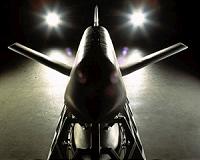| . |  |
. |
Orlando FL (SPX) Nov 23, 2010 Lockheed Martin scored a hit on a main battle tank at six kilometers in a company-funded, multiple-mission firing of its Joint Air-to-Ground Missile (JAGM). The complex flight test, at White Sands Missile Range, NM, demonstrated the ability of the imaging infrared (I2R) sensor in the missile's cooled tri-mode seeker to lock on before launch at extended range. The test also demonstrated the ability of the millimeter wave (MMW) radar sensor to simultaneously track a nearby moving tank, as well as the ability of the two sensors to discriminate targets and to hit the target of choice. Other test objectives included characterization of the launch shock environment, free-flight environment characterization and verification of design maturity, including demonstrating the success of corrective actions following minor anomalies in earlier tests. "This test was an extremely challenging first-time event, considerably more complex than any of the three contract-funded tests," said Frank St. John, vice president of Tactical Missiles at Lockheed Martin Missiles and Fire Control. "In addition to confirming the ability of our cooled tri-mode seeker to detect and lock onto threats from safe standoff range, we also demonstrated multi-sensor correlation and high-fidelity target discrimination." Propelled by the single multi-platform rocket motor the company has designed for the Engineering and Manufacturing Development (EMD) phase of the program, the tactically configured JAGM was fired from a static Lockheed Martin HELLFIRE M299 launcher. The cooled I2R sensor acquired and locked on to a stationary main battle tank prior to launch from six kilometers. Following launch, the I2R sensor guided the missile to a lethal hit. Concurrently, the MMW sensor detected and tracked a nearby secondary target, a moving main battle tank. "The test also verified the success of corrective actions we implemented to resolve anomalies from two earlier flight tests," St. John said. "This multiple-engagement flight experienced no anomalies and sensor performance was optimal, increasing confidence in the maturity of our design going into EMD." Coupled with an August 2 target hit at 16 kilometers in a contract-funded test of the semi-active laser (SAL) seeker, this latest shot completed the process of demonstrating the performance of Lockheed Martin's tri-mode seeker. The August 2 test was a static launch against a target board 16 kilometers downrange to assess performance of the SAL seeker in a lock-on-after-launch profile. The target was illuminated by a ground-based laser designator 1.1 kilometers from the target at a 20-degree offset angle. Following launch and activation of the laser designator, the SAL seeker acquired the laser spot and successfully guided the missile to the target, scoring a hit. Of the three JAGM sensor modes, the I2R is passive; it picks up the threat's heat signature without radiating detectable energy that makes the launch platform vulnerable to counter-fire. The other two sensor modes, SAL for precision strike and MMW to penetrate adverse weather and battlefield obscurants, defeat countermeasures and more accurately acquire moving targets, are both active. "In establishing the flight profile for the company-funded shot, we moved the range for the I2R engagement from four to six kilometers because passive target detection from safe standoff range is critical to platform and aircrew survivability," said Hady Mourad, JAGM program director at Lockheed Martin Missiles and Fire Control. "The cooled I2R also provides clear target discrimination, which reduces collateral damage. This is especially critical when rules of engagement demand confirmation of target track prior to launch." "Flawless sensor correlation in the cooled tri-mode seeker is what allows JAGM to fill the eight identified capability gaps," said St. John. "We demonstrated this in earlier contract-funded tests in which the cooled tri-mode seeker penetrated battlefield obscurants and defeated all threat countermeasures. As in all our tests, we used a tactical configuration, thereby significantly reducing risk going into EMD." Threshold aviation platforms for JAGM include the U.S. Army's AH-64D Apache attack helicopter, MQ-1C Extended Range Multi-Purpose (ERMP) unmanned aerial system (UAS) and OH-58D CASUP Kiowa Warrior armed reconnaissance helicopter; the U.S. Marine Corps' AH-1Z Cobra attack helicopter; and the U.S. Navy's MH-60R Seahawk armed reconnaissance helicopter and F/A-18E/F Super Hornet jet fighter. Initial operational capability (IOC) of JAGM on the AH-64D, AH-1Z and F/A-18E/F is scheduled for 2016; IOC for the MH-60R, OH-58 CASUP and MQ-1C is 2017. Numerous additional platforms are under consideration, including the Tri-Service Joint Strike Fighter (JSF) F-35 being developed by Lockheed Martin with an anticipated initial fielding in 2011.
Share This Article With Planet Earth
Related Links - Learn about missile defense at SpaceWar.com All about missiles at SpaceWar.com
 JASSM-ER Test Flights Highlight Outstanding Development Effort
JASSM-ER Test Flights Highlight Outstanding Development EffortOrlando FL (SPX) Nov 19, 2010 Lockheed Martin's Joint Air-to-Surface Standoff Missile - Extended Range (JASSM-ER) recently flew two successful test flights at White Sands Missile Range, NM, increasing the program's success rate to 91 percent in 11 flights. The live 2,000-pound class missiles, released from B-1B bombers, effectively navigated to and destroyed their intended targets. The primary flight test objectives we ... read more |
|
| The content herein, unless otherwise known to be public domain, are Copyright 1995-2010 - SpaceDaily. AFP and UPI Wire Stories are copyright Agence France-Presse and United Press International. ESA Portal Reports are copyright European Space Agency. All NASA sourced material is public domain. Additional copyrights may apply in whole or part to other bona fide parties. Advertising does not imply endorsement,agreement or approval of any opinions, statements or information provided by SpaceDaily on any Web page published or hosted by SpaceDaily. Privacy Statement |